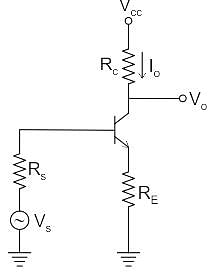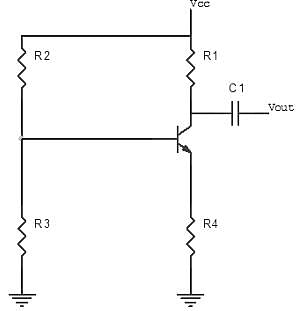Test: Feedback Amplifier - Electrical Engineering (EE) MCQ
15 Questions MCQ Test GATE Electrical Engineering (EE) Mock Test Series 2025 - Test: Feedback Amplifier
The negative feedback in an amplifier leads to which one of the following?
Applications of negative feedback to a certain amplifier reduced its gain from 200 to 100. If the gain with the same feedback is to be raised to 150, in the case of another such appliance, the gain of the amplifier without feedback must have been
An amplifier has a Open Loop voltage gain of –500. This gain is reduced to –100 when negative feedback is applied. The reverse transmission factor,β of this system is:-
The feedback topology in the amplifier circuit (the base bias circuit is not shown for simplicity) in the figure is

It is desired to reduce total harmonic of amplifier from 8% to 1% by use of 10% negative feedback. If the gain of the amplifier with original distortion and with reduced distortion is A1 and A2 then, A1 + A2 = −−−−−−
Consider a voltage series feedback network, where amplifier gain = 100, feedback factor = 5. For the basic amplifier, input voltage = 4V, input current=2mA. Find the input resistance of the network.
Consider given circuit.

What is the feedback configuration?
In a feedback network, input voltage is 14V, feedback voltage is 6V and source voltage is 20V. β is in ohms. What is its configuration?
Find the relative change in gain with negative feedback given that return ratio is 24, and feedback factor is 3, when the change in open loop gain is 2.
Which factor determines the gain of the voltage series feedback amplifier?
Which among the following is not a special case of voltage shut feedback amplifier?
|
25 docs|247 tests
|
|
25 docs|247 tests
|































